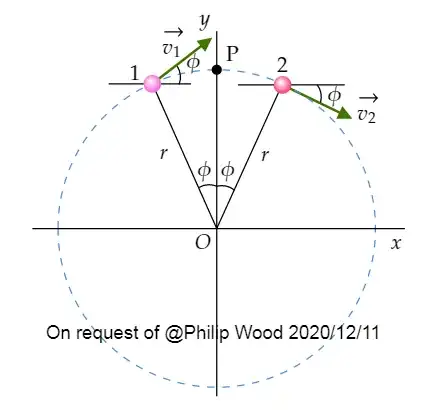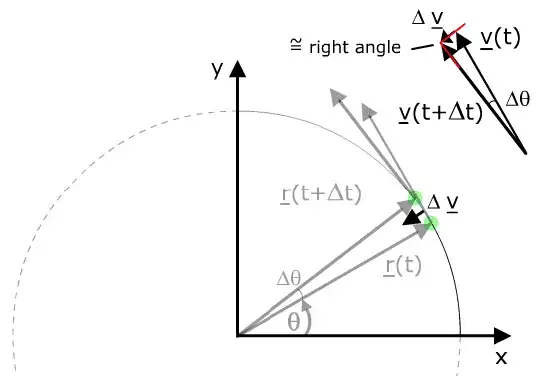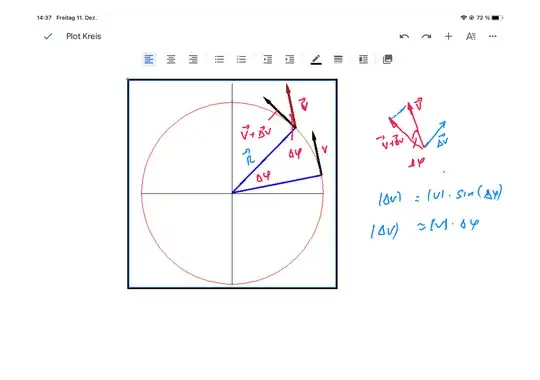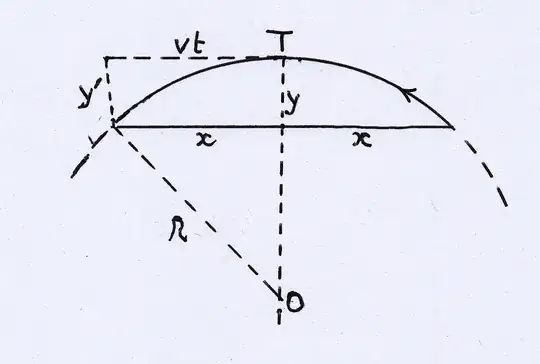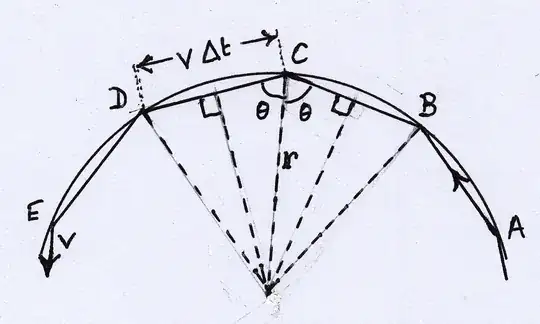I teach physics to 16-year-old students who do not know calculus and the derivates. When I explain the formula for centripetal acceleration in circular uniform motion, I use this picture:
Here,
$$\vec{a}_{\text{av}}=\frac{\Delta \vec{v}}{\Delta t}=\frac{\vec{v}_2-\vec{v}_1}{\Delta t}$$
and
$$\vec{v}_1=(v\cos\phi){\bf \hat x}+(v\sin\phi){\bf \hat y}, \quad \vec{v}_2=(v\cos\phi){\bf \hat x}+(-v\sin\phi){\bf \hat y}.$$
Combining these equations gives
$$\vec{a}_{\text{av}}=\frac{\Delta \vec{v}}{\Delta t}=\frac{-2v\sin\phi}{\Delta t}{\bf \hat y}, \tag 1$$
which shows that the average acceleration is towards the center of the circle. Using $\Delta t=d/v=2r\phi/v$, where $d$ is the distance along the curve between points $1$ and $2$, gives
$$\vec{a}_{\text{av}}=-\frac{v^2}{r}\left(\frac{\sin \phi}{\phi}\right){\bf \hat y}.$$ As $\phi\to 0$, $\sin \phi/\phi\to 1$, so
$$\vec{a}_{\text{cp}}=-\frac{v^2}{r}{\bf \hat y}, \tag 2$$
which shows that the centripetal acceleration is towards the center of the circle.
Does there exist another simple proof of Equation $(2)$, in particular, that the centripetal acceleration is towards the center of the circle?
